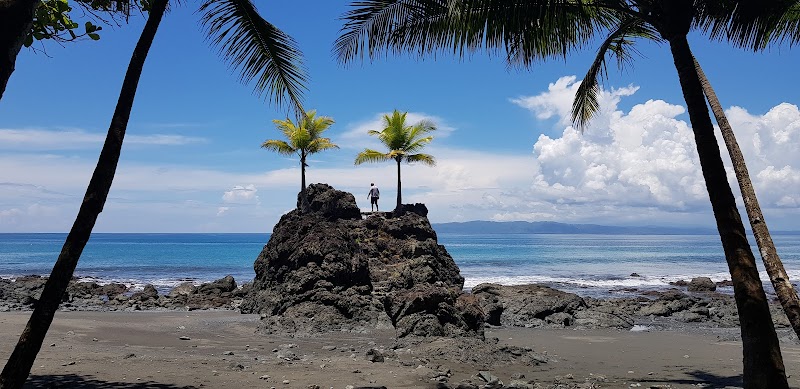
Whale Watching Season in Golfito: A Practical Guide to Puntarenas’s Marine Marvels
From July to October, Golfito’s coastal waters turn into a natural stage for humpback whales. This guide offers practical tips and vivid insights into planning a rewarding whale-watching trip in Puntarenas, blending adventure with useful advice for every traveler.
Choose the Right Time of Day
Morning trips often provide calmer seas and better light conditions for spotting whales and photography.
Wear Non-Slip Footwear
Boat decks can be slippery and uneven; sturdy shoes improve safety and comfort during boarding and disembarking.
Bring Binoculars and Waterproof Gear
Binoculars enhance distant whale sightings, while waterproof bags protect your belongings from sea spray.
Stay Hydrated and Protected from the Sun
Open waters increase exposure to sun and heat, so pack water and high-SPF sunscreen to maintain comfort and safety.
Whale Watching Season in Golfito: A Practical Guide to Puntarenas’s Marine Marvels
Golfito, resting along the southern edge of Costa Rica’s Puntarenas province, becomes a theater of life each year when humpback whales return to its waters. From July through October, these giants push through the bay, their bodies carving waves that dare you to watch closer. This season isn’t about distant glimpses but an engaging, tactile encounter with marine giants in a setting where ocean meets thick coastal forest.
The adventure begins with a short boat ride from Golfito’s modest harbor, where local guides steer you toward likely whale sightings. The waters here respond like a living pulse—gentle sways interrupted by sudden splashes or breaches that announce the whales’ presence. Expect the sea to be both inviting and challenging; currents push forward with intention, and spotting whales demands patience and alertness.
Preparing for whale watching means balancing comfort with readiness. Lightweight, breathable clothing is your shield against tropical sun and sea spray, while a wide-brimmed hat and sunscreen guard your skin. Sturdy, non-slip shoes help you navigate slippery boat decks and the occasional dock steps. Bring binoculars for sharper views, and a camera ready to capture the fragmented drama of whale tails or misty exhales.
Whale Watching Season here also gifts you intermittent glimpses of dolphins darting through the waves and seabirds that wheel like sentinels above. The guides pack local knowledge of where pods gather—their stories enrich the journey, connecting you to histories stretching back before tourism.
For those new to sea adventures, ride conditions can be moderately demanding; expect movement as the boat rocks and sways to the ocean’s rhythm. This is an encounter with nature fiercely itself—no guarantees, just raw observation and the chance to witness one of Earth’s largest mammals in motion.
When ready to book, seek operators committed to sustainable practices to minimize disturbance to these animals. Timing visits in early morning hours typically offers calmer seas and clearer light, enhancing both comfort and photography prospects.
In sum, whale watching in Golfito blends the thrill of unpredictable encounters with a practical setup that suits a range of adventurers. It’s a reminder of the ocean’s living pulse, inviting you to engage, respect, and learn.
Nearby Trips
All Adventures
Boat Charters
Water Activities
Adventures near Golfito, Puntarenas
Discover the unique and memorable adventures that make Golfito, Puntarenas special.
Frequently Asked Questions
When is the best time to spot humpback whales in Golfito?
The peak season runs from July through October, when humpbacks migrate to breed and calve in warm coastal waters. Early mornings offer the best sightings due to calmer seas.
Are whale-watching tours safe for families and beginners?
Yes, most tours cater to all skill levels, but mild boat motion requires basic stability and caution, especially for young children or those prone to seasickness.
What types of whales are seen besides humpbacks?
While humpbacks dominate sightings, it’s possible to see orcas and pilot whales occasionally, alongside frequent dolphin pods playing near boats.
How do local guides ensure responsible interaction with wildlife?
Guides follow strict guidelines limiting approach distances and time spent near whales, minimizing disturbance and respecting natural behaviors.
Are there any nearby hiking trails to combine with whale-watching?
Yes, the nearby Piedras Blancas National Park offers several forest trails, providing a contrasting terrestrial adventure after your marine excursion.
What is the chance of canceled trips due to weather?
Heavy rains or rough seas occasionally cause cancellations. It’s wise to book flexible tours or plan alternative activities on standby days.
Recommended Gear
Sturdy Non-Slip Shoes
Protects your footing on wet decks and rocky docks, essential for all whale-watching trips.
High-SPF Sunscreen
Shields skin from intense tropical UV rays reflected by the water.
Binoculars
Enhances your ability to spot whales and dolphins at a distance, enriching the experience.
Waterproof Camera or Case
Allows you to capture whale moments without risk from spray or unexpected rain.
Local Insights
Hidden Gems
- "Mirador Cortes, a lesser-known hillside overlook offering panoramic views of Golfito Bay ideal for whale spotting from shore"
- "Small mangrove estuaries nearby where juvenile marine life thrives unseen and remoteness meets biodiversity"
Wildlife
- "Humpback whales – known for their acrobatic breaches and distinctive songs"
- "Bottlenose dolphins – frequent companions near whale pods"
- "White-faced capuchin monkeys – often visible in coastal trees near docks"
- "Sea turtles – sometimes seen near nesting beaches in the region"
History
"Golfito’s deepwater harbor was once a strategic port for banana exports and has since evolved into a hub for eco-tourism, where fishing traditions meet conservation efforts."
